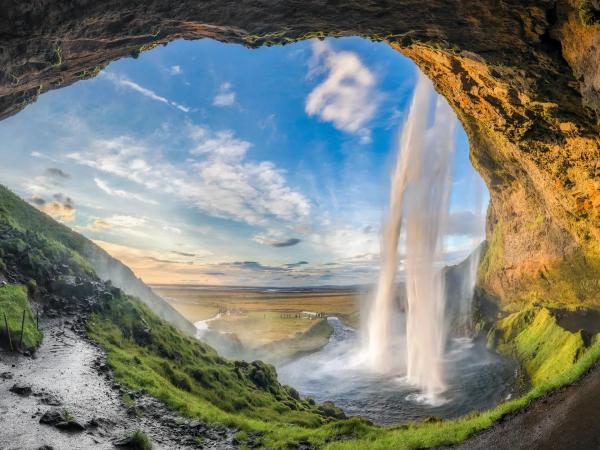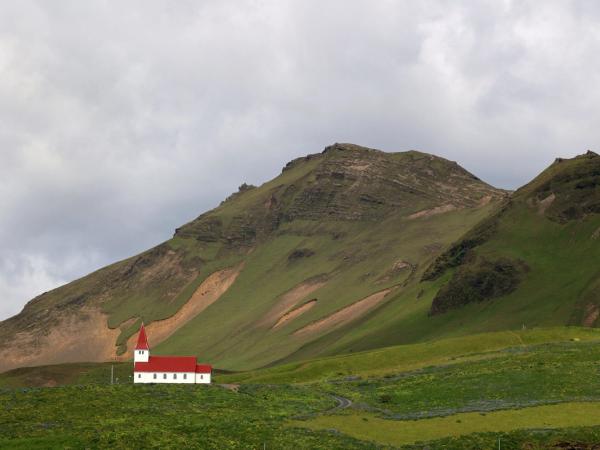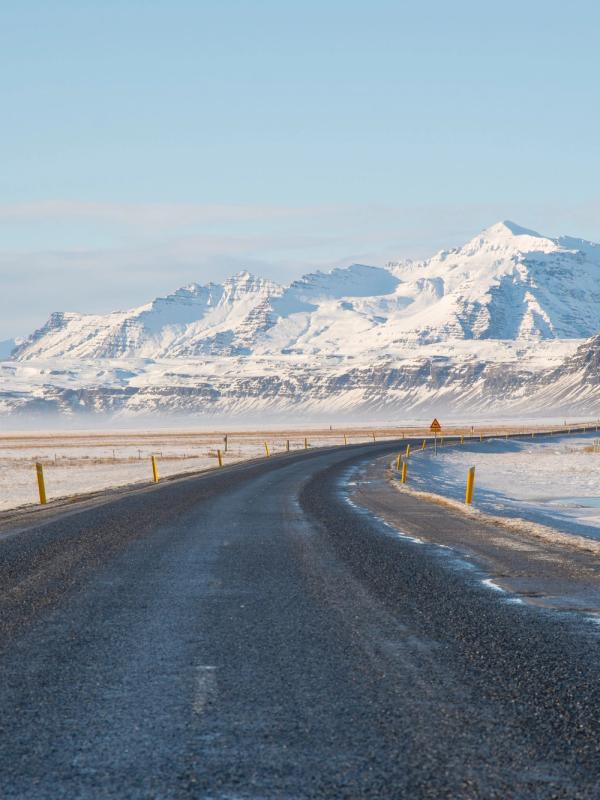
Discovering South Iceland: Places to visit, Activities, Weather, etc
There are not many places in the world like Iceland. A relatively small country full of natural wonders and vibrant culture waiting for you to discover. There is so much to see and do here that we understand that sometimes it can be tricky to choose the places you’re going to visit.
In this humble guide, we’ll focus on South Iceland. From amazing waterfalls to jaw-dropping landscapes to black sand beaches, this mesmerizing region has something for everyone.
Key Takeaways
- South Iceland is full of natural wonders, making it the perfect stop for those with limited time.
- Activities in South Iceland include hiking, glacier walking, horseback riding, and hot springs.
- The weather in South Iceland is milder than in the rest of the country.
The Best Places to Visit in South Iceland
What better way to start our guide than with all the beautiful places you'll get to see once you're roaming around South Iceland? There are so many spots we really struggled to make the list, but I think we made a good one.
1. Seljalandsfoss and Gljúfrafoss Waterfalls
These two waterfalls could be described separately, but they are so close that many consider them twin attractions. However, each one offers a different experience to the visitor.
The most famous of the two is Seljalandsfoss, one of the most iconic waterfalls in Iceland. It’s part of the Seljalandsá River, which has its source in the Eyjafjallajökull glacier. This impressive cascade stands 65 meters tall (213 feet).
What's most appealing about Seljalandfoss is that there is a path that takes you behind the falls. From there, you’ll enjoy a unique view through the curtain of water. For this reason, you better be prepared to get wet, so bring waterproof clothing and shoes to avoid spending the rest of your day wet.
From there, you just have to walk for ten minutes to get to Gljúfrafoss (or Gljufrabui), often overshadowed by its more famous neighbor. That’s the reason why it’s known as the hidden waterfall. To get to Gljúfrafoss, you need to take a narrow path along a small stream.
The waterfall itself is hidden behind a large cliff, so the surprise effect is even better once you get there. Then, you’ll find the cascade falling over a mossy cave, creating a magical atmosphere.
2. Skaftafell National Park
Technically, it’s not a national park by itself, but part of the larger Vatnajökull National Park, one of the three national parks in Iceland. It was considered a national park before but was integrated into the biggest national park in Europe a few years ago.
Skaftafell is a preservation area within the park that offers a variety of hiking trails leading to stunning viewpoints. You’ll walk surrounded by stunning green valleys and glaciers. One of the easiest and most spectacular is the route to Svartifoss, also known as the Black Waterfall. This cascade is surrounded by hexagonal basalt columns, which inspired the design of Hallgrímskirkja Church in Reykjavik.
Other great options for hiking here are the trail to Skaftafellsjökull glacier or the Sjónarnípa hike, which offers panoramic views of the surrounding glaciers and coastline.
During your visit, make sure to stop by the Skaftafell Visitor Centre, where you can get detailed information about the trails and local weather conditions.
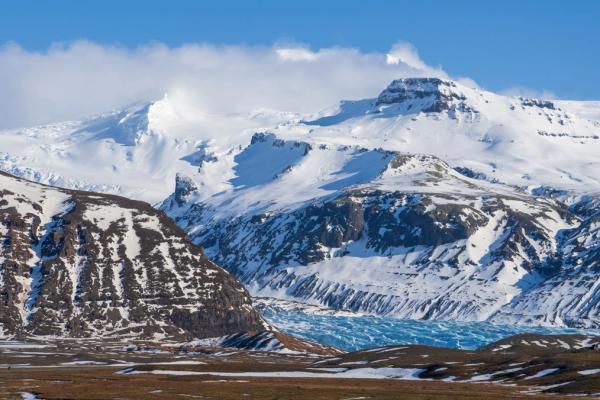
3. Jökulsárlón Glacier Lagoon
This stunning lagoon is one of the most famous natural features in Iceland. It’s a glacial lake that never looks the same twice, as it’s filled with big chunks of melting ice that have separated from the glacier. These pieces go from transparent to a vivid blue hue, floating in the lagoon before drifting off to the ocean.
Some of these small icebergs end up in the nearby Diamond Beach, where they create a great contrast with the black sand.
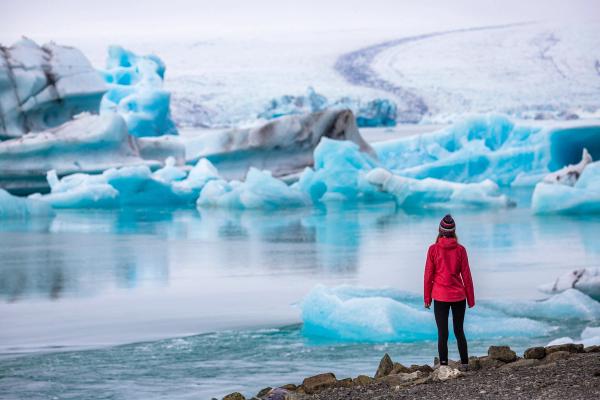
4. Reynisfjara Black Sand Beach
When talking about black sand beaches, it’s impossible not to mention Reynisfjara, one of the most photographed beaches in the world. The dramatism created by the large basalt columns that arise from the sea combined with the color of the beach, creates an atmosphere that seems from another world.
In front of Reynisfjara Beach, you'll see the Reynisdrangar rocks. Local folklore says they are trolls turned to stone.
Please be careful on the beach. The waves are unpredictable and famously powerful. Keep your distance from the water.
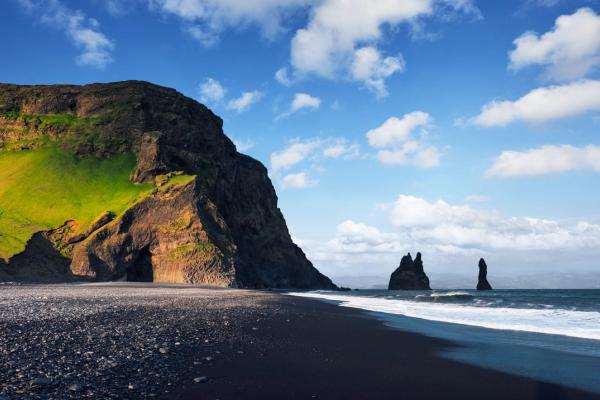
5. Dyrhólaey
The small peninsula of Dyrhólaey is really close to Reynisfjara Beach, and it’s a great stop on Iceland’s South Coast. Once an island before connecting to the mainland, it has now become a nature reserve. It’s a famous location to spot puffins, one of the cutest animals you can see in Iceland.
The beautiful lighthouse at Dyrhólaey was built in 1927, and you can get an amazing view from its vantage point. Do not miss the opportunity to visit Loftsalahellir Cave, which offers an amazing view through its arch.
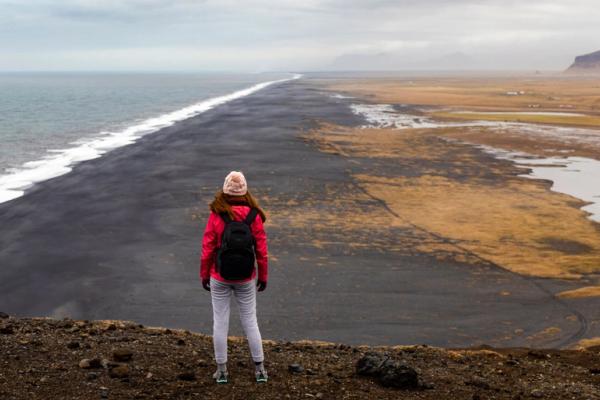
6. Vík í Mýrdal
This charming village, sometimes called just Vík, is the southernmost town in Iceland.
The village is a great place to refuel and restock supplies before continuing your journey along the South Coast. But it’s much more than that. On top of a hill, you’ll find Vík Church, with its red roof. The view from there is absolutely stunning, offering panoramic views of the town and the surrounding landscape.
The beaches at Vík are considered to be one of the most beautiful in the world.
7. Plane Wreck at Sólheimasandur
If you’re looking for a touch of history, the DC-3 plane wreck is also one of the most photographed places in South Iceland. In 1973, a US Navy DC-3 plane crashed in Sólheimasandur due to fuel shortage. While all crew members survived, the aircraft was left behind and has become an increasingly popular destination.
The contrast between the fuselage and the black sand on this remote beach is astonishing. It's perfect for taking pictures.
The hike to the wreck is about 45 minutes each way, and the area is exposed to wind and rain, so come prepared.
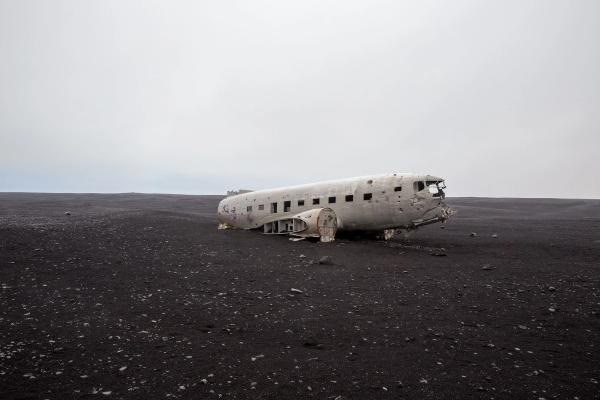
8. Heiðmörk Nature Reserve
This natural sanctuary is just 10 kilometers (6 miles) away from Reykjavík. It was established as a nature reserve in 1950 and features diverse landscapes, including lava fields, woodlands, and lakes. It’s known for its rich biodiversity and is home to many plant and animal species, such as the Arctic fox.
The reserve has many hiking and biking trails and also serves as an outdoor classroom for environmental education. Don’t miss out on the Rauðhólar pseudocraters.

9. Hveragerði Geothermal Park
Located in southwestern Iceland, the town of Hveragerði is the center of geothermal activity in the country. In this town, you can find the Hveragerði Geothermal Park, a natural attraction that shows the intense geothermal activity in the region. The park features hot springs, steam vents, boiling mud pots, and geysers, all spectacular to see.
There are many things to do here. The main attractions are the therapeutic geothermal pools and steam baths, which are great for relaxation. You can also learn about geothermal processes and their importance to Iceland's lifestyle.
But the highlight of the park is that visitors can cook food using geothermal heat, something that has been done traditionally in Iceland.
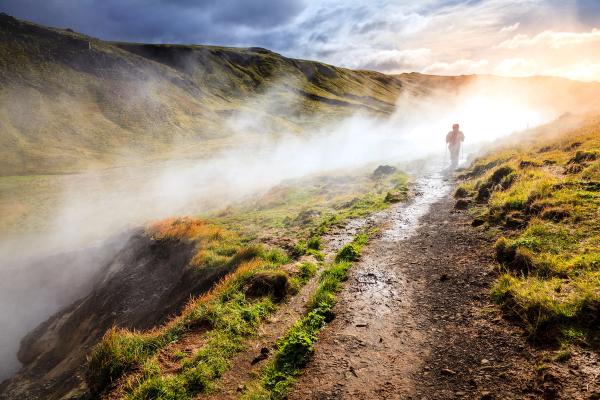
10. Reykjadalur Valley
Not far from Hveragerði is another important spot for geothermal activity. Reykjadalur Valley is famous for its scenic beauty and natural hot springs. In fact, Reykjadalur can be translated as “Steam Valley.”
Here, you can enjoy a picturesque hike through the meadows and then relax in the naturally heated rivers.
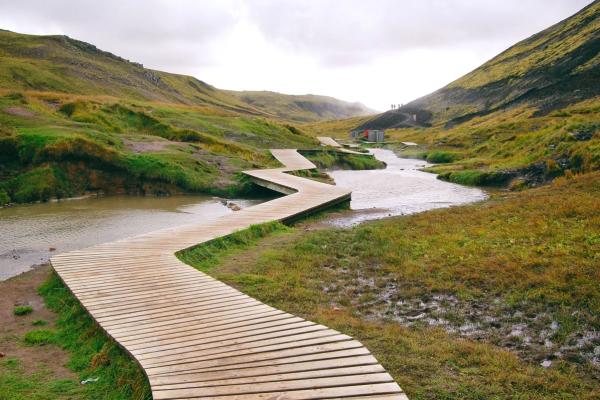
11. Eyjafjallajökull
Without a doubt, one of Iceland's most famous volcanoes. And not only for its beauty. This volcano became known worldwide for its dramatic eruption in 2010, which caused air traffic disruption in North and West Europe for a week.
Eyjafjallajökull is also known for its striking beauty. Standing at 1,651 meters (5,417 feet), there's an ice cap covering the volcano's caldera.
The glacier and surrounding landscapes offer amazing views.
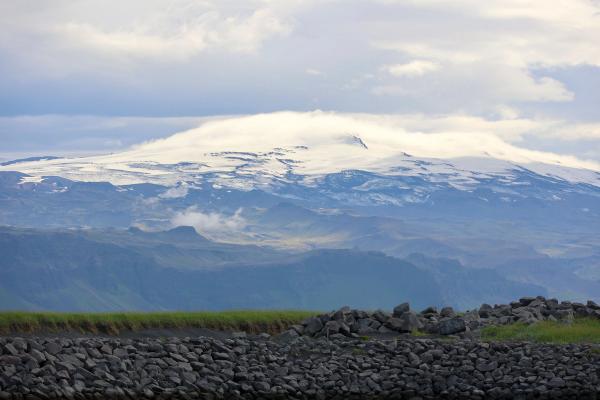
12. Skógafoss
A must-visit destination, Skógafoss is one of the most famous and powerful waterfalls in Iceland. The “Forest Waterfall” is known for its 60-meter drop on the Skóga River. You can get really close to the falls at the bottom, where you can feel the spray and hear the roaring sound of the cascade.
There’s also a staircase that takes you to a viewing platform that offers different views of the fall and its surroundings.
The legend says that a Viking called Þrasi Þórólfsson hid a treasure chest behind the waterfall, which adds a bit of mystery to this already majestic place.
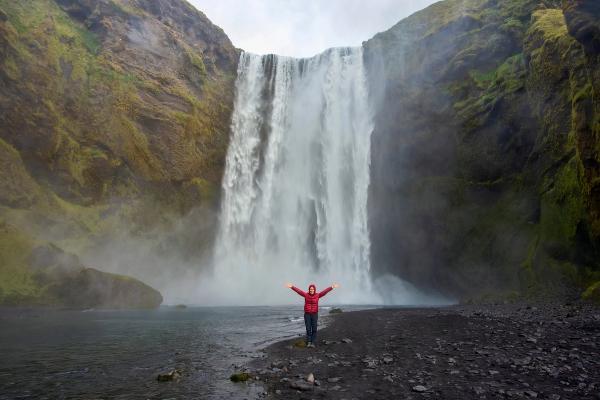
13. Skógar Museum
Not far from Skógafoss is a place full of cultural and historical significance. The Skógar Museum, located in the small village of Skógar, has a collection of artifacts and objects that explain Icelandic culture and heritage's evolution over a thousand years.
The exhibition includes traditional turf houses, fishing and farming equipment, and a vast display of historical photographs and documents. In this open-air museum, visitors can immerse in Iceland’s past and rich cultural legacy.
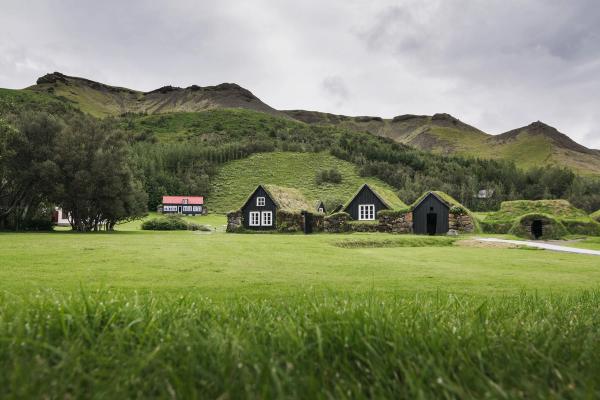
14. Seljavallalaug Pool
Nestled in the quiet Seljavellir valley in South Iceland, Seljavallalaug is one of the country's oldest and most picturesque swimming pools. Built in 192, it’s a fantastic place to enjoy the benefits of a geothermal bath in a peaceful environment.
It can be accessed after a short walk from the nearest road. The naturally heated waters allow you to soak even if the temperature outside is quite cold. The green hills and dramatic cliffs around add an extra touch to this already rewarding experience.
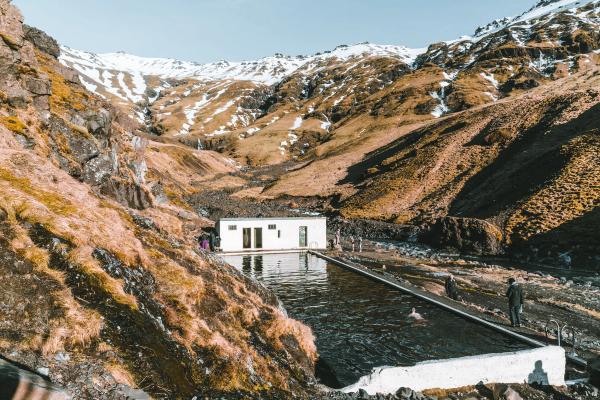
15. Hjörleifshöfði & Yoda Cave
If you drive along Iceland's South Coast, stopping at Hjörleifshöfði is a treat. This small promontory rises over the black sand beaches of Mýrdalssandur.
And if you are a Star Wars fan, this stop will be one of your favorites. Among the cliffs lies Hjörleifshöfði, popularly known as the Yoda Cave. The entrance to this cave resembles the shape of the legendary Jedi master.

16. Eldhraun Lava Field
In 1783, the volcanic fissure Laki erupted devastatingly, emitting sulfuric aerosols for eight months. This event became one of the most important climatic events in the past few centuries, but it also brought positive news.
The eruption is responsible for creating Eldhraun, one of the largest lava fields in the world, with a size of approximately 565 square kilometers (218 square miles). The most appealing feature here is the contrast between the rugged black lava fields and the green moss that covers some parts of the fields, creating a unique and surprising landscape, almost surreal.
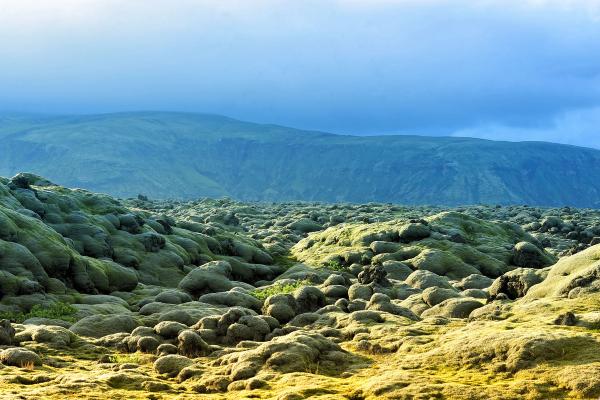
Activities in South Iceland
South Iceland is home to endless natural wonders, but it's also a rewarding place for the most adventurous and those seeking relaxation.
Hiking and Exploring
Many of the attractions we have listed before can be enjoyed best on foot. Most offer a wide range of hiking paths with different levels of difficulty and time needed to complete them. Trails in Skaftafell, the path behind Seljalandsfoss, and the Heiðmörk Nature Reserve offer some of the best hiking experiences.
Glacier Tours
Visiting a glacier or exploring ice caves are some unique experiences that you can do in South Iceland. Expert guides will take you to these sometimes overwhelming places, equipped with the appropriate gear, which you can rent.
Wildlife Watching
Head to Dyrhólaey to see puffins or take a boat tour to see seals and other marine life in the Jökulsárlón Glacier Lagoon. The puffin colonies have their best moment in summer when these birds come here to nest.
Horseback riding
One of the most attractive and photographed animals in this country is the Icelandic horse. These friendly and easy-to-ride horses are small but strong and perfectly adapted to the rugged Icelandic terrain.
Relaxing in Hot Springs
The best way to end a day full of adventures –or to make a stop halfway your journey- is to take a relaxing bath in geothermal waters. There are plenty of spots in South Iceland to do this, such as Hveragerði Geothermal Park, Reykjadalur Valley, and Seljavallalaug.
What's The Weather Like in South Iceland
Iceland's South is known for its rapidly changing weather conditions. The coastline changes a lot compared to a higher and more interior area.
In general, Southern Iceland is wetter and windier than most of the country, but the temperatures are warmer here. As the weather changes so much in this country, it is advisable to check the weather forecast almost every day.
Here’s what to expect in different seasons:
- Winter (November to March): Expect cold temperatures, often below freezing, and short daylight hours. The snow creates a magical atmosphere, and it’s the best time to see the Northern Lights and explore ice caves.
- Summer (June to August): The weather is the nicest at this time, with fewer rainy days and mild temperatures. The daylight hours are very long, perfect for making the most of your day. In fact, the Midnight Sun occurs at the end of June. This is the peak tourist season, so expect more crowds.
- Spring (April to May): The snow and ice start to disappear, and nature blooms like no other time. Rain and wind can be frequent, but the weather tends to be moderate. It’s the best season to visit the waterfalls.
- Autumn (September to October): Similar to spring, but with daylight hours getting shorter by the day. The foliage offers a unique palette of colors. During shoulder season, there are fewer tourists.
Travel tips
- Pack smart: The weather can change rapidly, so bring layers, waterproof clothing, and sturdy footwear.
- Check the weather and road conditions: The weather can change quickly here. It’s recommended that you check the weather forecast before starting your day. Also, some roads may be closed at certain times, so it’s important to check their status.
- Rent a Car: Having a car allows you to explore remote areas at your own pace. If you visit in colder months, ensure it's equipped for winter driving.
- Respect Nature: Follow local guidelines to protect the fragile environment, especially in geothermal areas and nature reserves.
The south of the north
South Iceland is a region that offers some of the best this country has to offer. Here, you can find amazing glaciers, stunning lagoons, and relaxing hot springs and geothermal pools. Plan your trip in advance and book activities or tours in advance, especially during peak season. Pack your bags; South Iceland is waiting for you!

